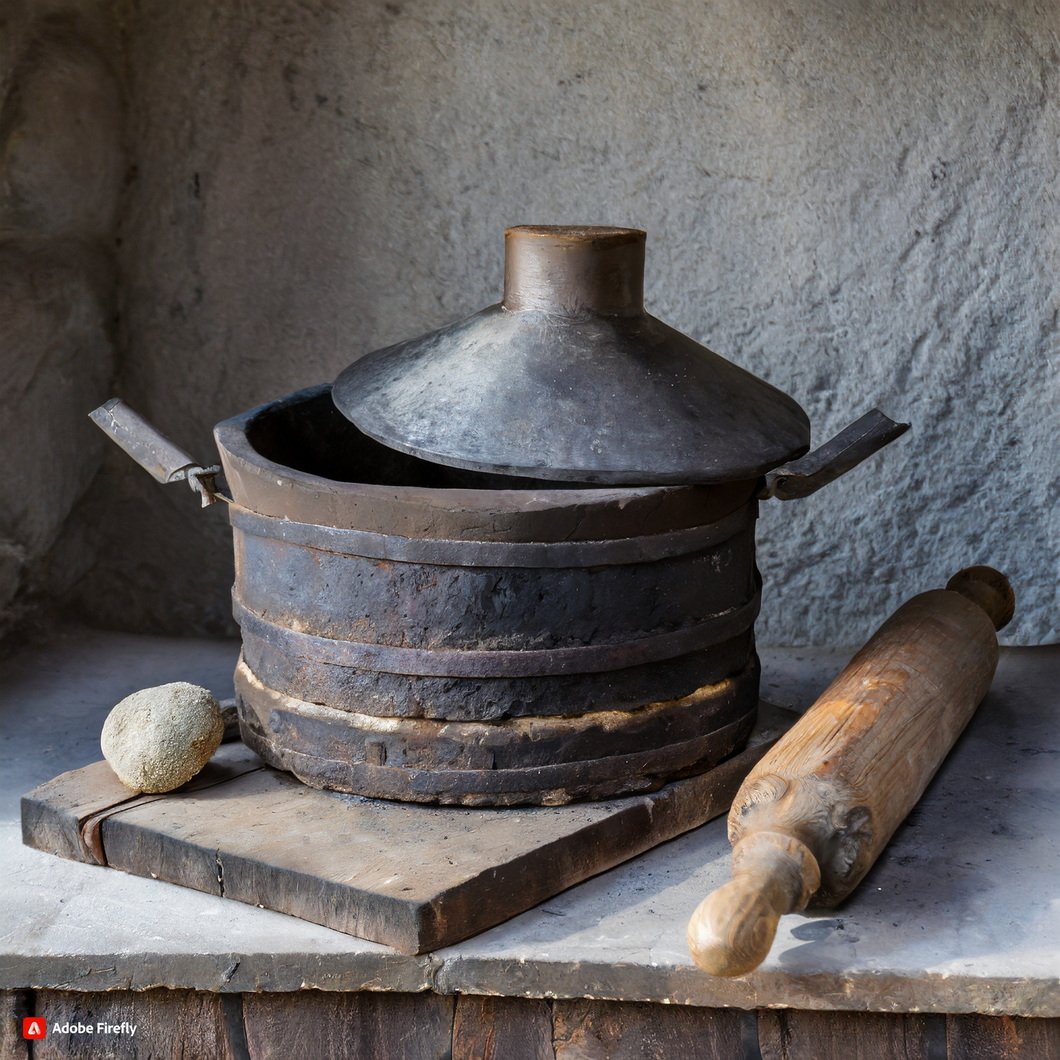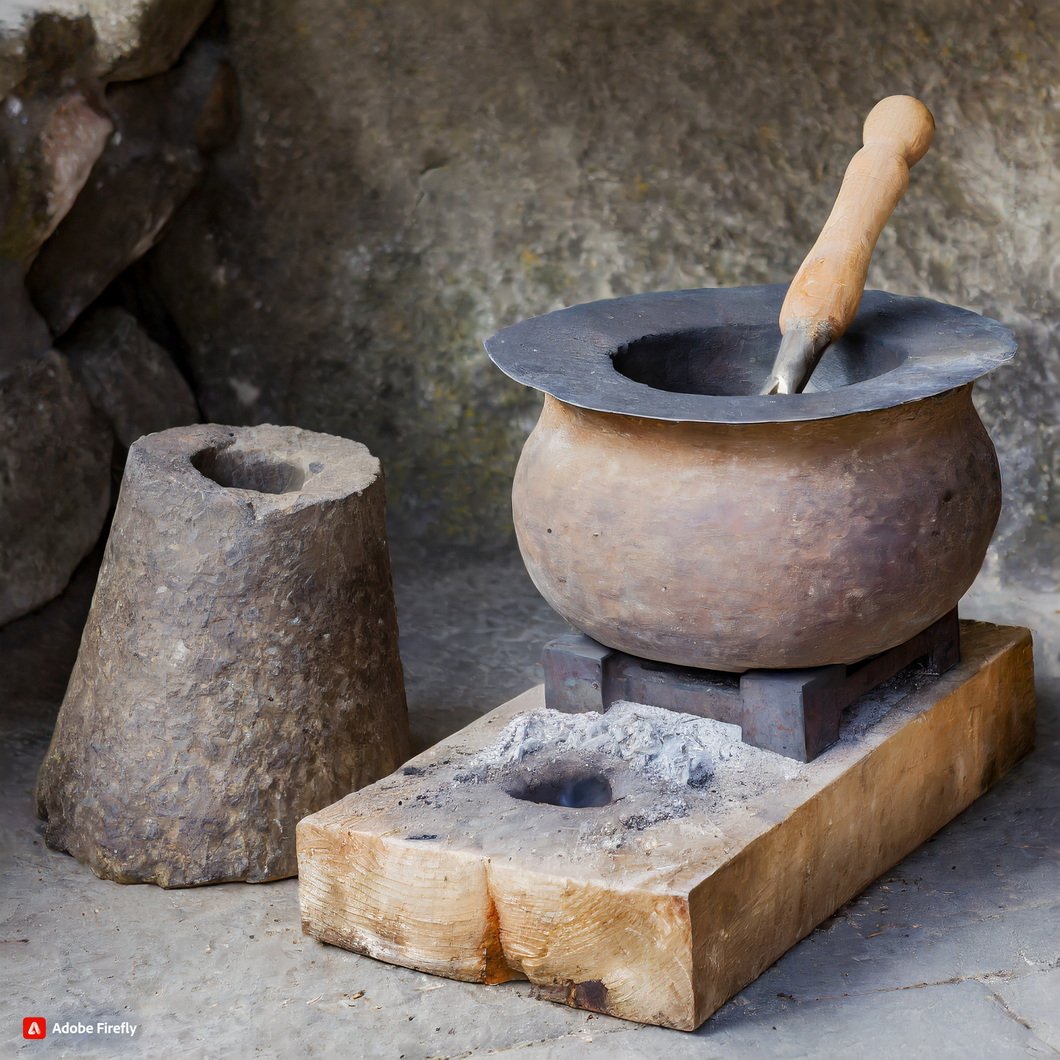Unveiling Culinary Secrets: Exploring Ancient cooking methods and Recipes is a fascinating journey into the past, delving into the rich history of cooking and cuisine. This exploration takes us back to ancient times, where we uncover the secrets of how our ancestors prepared and enjoyed their meals.


60 Days to a Healthier You: Quick & Easy Recipes for Transforming Your Diet
$12.00$5.00Buy NowFrom traditional cooking techniques to forgotten recipes, this exploration of ancient culinary practices offers a unique perspective on the evolution of food and its cultural significance. Join us as we uncover the hidden gems of the culinary world and discover the delicious flavors of the past.
5 Fascinating Ancient Cooking Methods That Will Take You Back in Time

Have you ever wondered what it would be like to cook like our ancestors did? To use the same methods and ingredients that were used centuries ago? Well, wonder no more because in this article, we will be exploring 5 fascinating Ancient cooking methods that will take you back in time.
1. Clay Pot Cooking
Clay pot cooking is one of the oldest methods of cooking, dating back to 20,000 years ago. It involves using a clay pot or vessel to cook food over an open fire. This method was popular among ancient civilizations such as the Greeks, Romans, and Egyptians. The clay pot is able to retain heat and moisture, resulting in tender and flavorful dishes. It is also a healthier option as it requires little to no oil for cooking.
2. Spit Roasting
Spit roasting is another ancient cooking method that has been around for thousands of years. It involves cooking meat on a long rod or spit over an open fire. This method was commonly used by nomadic tribes and was a way to preserve meat without refrigeration. The slow rotation of the meat over the fire results in a juicy and evenly cooked dish. Today, spit roasting is still used in many cultures and is a popular method for cooking whole animals such as pigs and lambs.
3. Tandoor Cooking
Tandoor cooking originated in ancient India and is still widely used in South Asian and Middle Eastern cuisine. It involves cooking food in a clay oven called a tandoor, which is heated with charcoal or wood. The high heat of the tandoor cooks the food quickly, resulting in a crispy exterior and a tender interior. Tandoor cooking is most commonly used for making bread, such as naan, but can also be used for meats and vegetables.
4. Fermentation
Fermentation is a method of food preservation that has been used for thousands of years. It involves using microorganisms, such as bacteria and yeast, to break down sugars in food, resulting in a tangy and flavorful product. This method was commonly used for preserving fruits and vegetables, as well as making beverages such as wine and beer. Today, fermentation is still used in many cultures and has gained popularity in the culinary world for its unique and complex flavors.
5. Stone Cooking
Stone cooking is a method that was used by ancient civilizations such as the Mayans and Aztecs. It involves cooking food on hot stones, either in a pit or on a flat surface. The stones are heated over a fire and then the food is placed on top, resulting in a smoky and earthy flavor. This method is still used in some cultures today, particularly for cooking meats and vegetables.
In addition to these cooking methods, ancient recipes have also been passed down through generations and are still enjoyed today. These recipes often use simple and natural ingredients, showcasing the flavors of the food itself. Some popular ancient recipes include honey-glazed roasted vegetables, spiced meats cooked in clay pots, and fermented drinks made from fruits and grains.
Exploring these Ancient cooking methods and recipes not only gives us a glimpse into the past, but also allows us to appreciate the simplicity and ingenuity of our ancestors. It also reminds us to slow down and savor the flavors of our food, rather than relying on modern conveniences. So why not try incorporating one of these methods into your next cooking adventure? Who knows, you may just discover a new favorite dish that has been enjoyed for centuries.
Uncovering the Hidden Flavors of History: Exploring Ancient Recipes and Techniques
Have you ever wondered what people ate in ancient times? How did they cook their food without the modern conveniences we have today? What flavors and techniques were used to create their meals? These are questions that have intrigued food enthusiasts and historians for centuries. In this article, we will take a journey back in time to uncover the hidden flavors of history by exploring ancient recipes and cooking methods.

One of the most fascinating aspects of ancient cooking is the use of fire. Before the invention of stoves and ovens, people relied on open fires to cook their food. This method of cooking not only provided heat but also added a unique smoky flavor to the dishes. In ancient Greece, for example, they used a technique called spit-roasting, where meat was skewered and cooked over an open fire. This method is still used today in some cultures, and it is said to enhance the flavor of the meat.
Another ancient cooking method that is still used today is fermentation. This process involves using microorganisms to break down food, resulting in a tangy and flavorful product. In ancient Egypt, they used fermentation to make beer and bread. The Egyptians believed that the gods taught them how to make beer, and it was an essential part of their daily diet. Today, we can still taste the flavors of history by trying traditional Egyptian beer, which is made using the same techniques as in ancient times.
As we travel further back in time, we come across the ancient Romans, who were known for their lavish feasts and elaborate cooking techniques. One of their most famous dishes was called “Apicius,” a recipe book that contained over 400 recipes. These recipes included exotic ingredients such as flamingo tongues and peacock brains. While these dishes may seem bizarre to us today, they were considered delicacies in ancient Rome. The Romans also used a variety of spices and herbs to enhance the flavors of their dishes, some of which are still used in modern cooking. Read Recipes Weight Loss Salads.
Moving on to ancient China, we discover a rich culinary history that dates back thousands of years. The Chinese were the first to use chopsticks as a utensil for eating, and they also invented the wok, a versatile cooking vessel that is still used in many Asian cuisines today. The wok allowed for quick and efficient cooking, and the high heat used in this method resulted in flavorful and crispy dishes. The Chinese also used a variety of sauces and seasonings, such as soy sauce and ginger, to add depth and complexity to their dishes.

One of the most intriguing aspects of ancient cooking is the use of unconventional ingredients. In ancient Mexico, for example, the Aztecs used insects as a source of protein in their meals. Today, insects are still consumed in some parts of the world, and they are said to have a nutty and earthy flavor. In ancient Peru, the Incas used potatoes as a staple food, and they had over 200 varieties of potatoes in their cuisine. These ancient ingredients and techniques have shaped the way we eat today, and they continue to be a source of inspiration for chefs around the world. Read easy Healthy Lunch for Weight Loss.
In conclusion, exploring ancient recipes and cooking methods allows us to uncover the hidden flavors of history. From the use of fire and fermentation to the invention of new utensils and the use of unconventional ingredients, ancient cooking has left a lasting impact on our culinary world. So next time you sit down to enjoy a meal, take a moment to appreciate the flavors and techniques that have been passed down through generations, and remember that every dish has a story to tell.
Q&A
Q: What is the purpose of exploring Ancient cooking methods and recipes?
A: The purpose is to gain a better understanding of the history and evolution of cooking, as well as to discover new and unique flavors and techniques that can be incorporated into modern cuisine.
Q: What are some examples of Ancient cooking methods and recipes that have been uncovered through this exploration?
A: Some examples include cooking with fire pits, using clay pots and vessels, and incorporating herbs and spices for flavoring. Recipes for dishes such as stews, breads, and roasted meats have also been discovered.
Conclusion
In conclusion, exploring Ancient cooking methods and recipes through the lens of Unveiling Culinary Secrets has provided valuable insights into the history and evolution of food and cooking. By delving into the techniques and ingredients used by our ancestors, we gain a deeper understanding of the cultural and societal influences on cuisine. This exploration also allows us to appreciate the ingenuity and resourcefulness of ancient cooks, who were able to create delicious and nutritious meals with limited resources. Overall, Unveiling Culinary Secrets is a fascinating journey that sheds light on the rich and diverse world of ancient cooking.
Please follow us on linkedin. You can learn all best canadian food recipes you can check our Culinary 1TouchFood Youtube and Telegram 1TouchFood page. Don’t forget Fighting Obesity Magazine and Radio Cooking.


